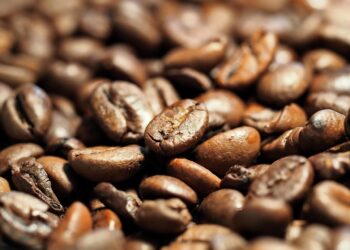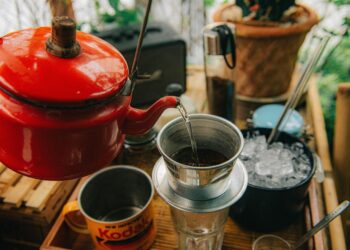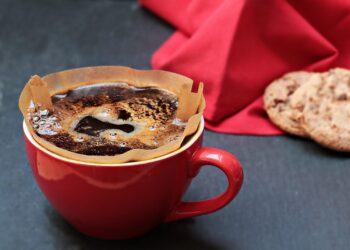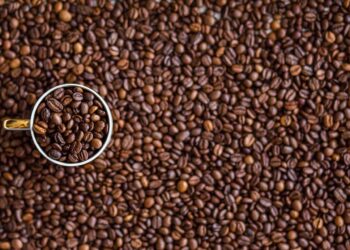Mastering the Art of Pour-Over Coffee: A Comprehensive Guide
The art of pour-over coffee has taken the coffee enthusiast community by storm, offering an unprecedented level of flavor control and a deeply satisfying ritualistic experience. This brewing method, beloved for its precision and clarity, can elevate your morning cup into a meditative practice that brings out the best in your coffee beans. In this comprehensive guide, we’ll explore the essentials of mastering pour-over coffee, from selecting the right equipment to refining your pouring technique.
H2: Understanding Pour-Over Coffee
Pour-over coffee involves pouring hot water over coffee grounds in a filter. The water then flows through the coffee, extracting its flavors, and drips into a carafe or mug. The result is a clean, flavorful cup of coffee that highlights the coffee bean’s true profile. This method offers more control over the brewing time and temperature, variables that are crucial for unlocking the full potential of coffee.
H2: Essential Equipment for Pour-Over Coffee
H3: The Coffee Maker
The most popular pour-over coffee makers are the Hario V60 and the Chemex. Both offer unique benefits:
- Hario V60: Known for its conical shape and spiral ridges, which optimize the expansion of coffee grounds for a uniform extraction.
- Chemex: Favored for its elegant design and thicker filters, which produce a particularly clean and smooth cup of coffee.
H3: Coffee Grinder
A good grinder is crucial. For pour-over, a burr grinder is preferable as it delivers a consistent grind size, critical for even extraction.
H3: Filters
Choose between bleached (white) or unbleached (brown) filters. Bleached filters are generally recommended as they tend to carry less papery taste than their unbleached counterparts.
H3: Kettle
A gooseneck kettle is ideal for pour-over brewing. It offers precise control over the direction and speed of the water flow, allowing for even saturation of the coffee grounds.
H3: Scale
A digital scale helps you measure coffee and water accurately, ensuring consistent results in every brew.
H2: Selecting the Right Coffee Beans
H3: Bean Type
For pour-over, opt for high-quality, single-origin beans that can withstand the scrutiny of such a nuanced brewing method, revealing intricate flavor notes and aromas.
H3: Roast Profile
Medium-light to medium roasts are typically preferred for pour-over as they retain more of the bean’s original characteristics and complex acidity.
H2: The Brewing Process
H3: Ratio of Coffee to Water
A good starting point is a 1:16 ratio of coffee to water (e.g., 25 grams of coffee to 400 grams of water). Adjust according to taste preference and coffee strength.
H3: Water Temperature
Water temperature should be between 195°F to 205°F. Temperatures outside this range can lead to under-extraction or over-extraction.
H3: Pre-wetting
Also known as “blooming,” this step involves pouring a small amount of hot water over the grounds to let them expand, releasing gas and promoting a more even extraction.
H3: Pouring Technique
Begin in the center of the grounds and slowly spiral outwards, then inward again. The entire pour should ideally take about 2 to 3 minutes.
H2: Troubleshooting Common Pour-Over Coffee Mistakes
H3: Bitter Coffee
This often indicates over-extraction. Consider grinding your coffee a bit coarser or reducing the water temperature.
H3: Sour Coffee
If your coffee tastes sour, it might be under-extracted. Try a finer grind or slightly hotter water.
H3: Uneven Extraction
This can be caused by uneven pouring or improper grind size. Ensure your pouring technique is controlled and consistent, and check that your coffee grounds are uniform.
H2: Cleaning and Maintenance
Prolong the life of your equipment and ensure consistently delicious coffee by cleaning your pour-over gear after each use. This involves rinsing the coffee maker, washing filters if reusable, and cleaning the kettle to prevent mineral buildup.
H2: Conclusion
Pour-over coffee is both an art and a science, merging meticulous technique with personal flair. By understanding the variables involved and practicing your method, you can enjoy not just a cup of coffee, but a full sensory experience. Brew, taste, adjust, and enjoy the journey towards pour-over perfection.





